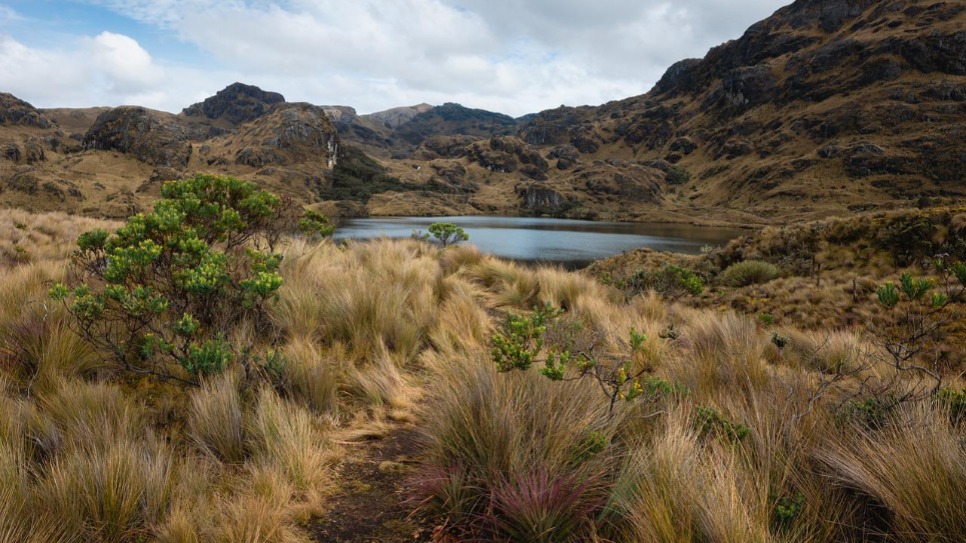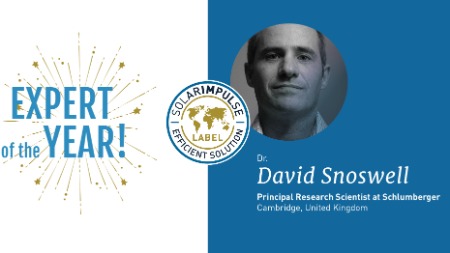Technical Article
Forgetting about protecting biodiversity?

Claudia Hitaj is a Solar Impulse Foundation independent Expert in environmental economics with a focus on the energy and agriculture sectors. On the occasion of the International Day for Biological Diversity (22nd May), Claudia talks about the importance of preserving and enhancing biodiversity, also through the use of sustainable agriculture.
The 1992 Earth Summit in Rio de Janeiro brought us the United Nations Framework Convention on Climate Change (UNFCCC) and the Convention on Biological Diversity (CBD). While much of the public and media attention has focused on climate change, the goals of the two conventions are linked: We need to combat climate change in order to protect biodiversity, and biodiversity and healthy ecosystems in turn support climate change adaptation and mitigation.
Biodiversity protection and climate change mitigation and adaptation go hand-in-hand
It is important to apply biodiversity criteria and safeguards to climate change interventions, since biodiversity loss and ecosystem degradation weakens the supply of ecosystem services essential for mitigation and adaptation [1].
Forest and wetland ecosystems store carbon and provide a habitat for a diverse array of plants and animals. For example, Verra certifies carbon offset projects, some of which create net positive benefits for local communities and biodiversity in addition to carbon removals under the Climate, Community, and Biodiversity (CCB) standards [2]. Peatlands, in particular, store more carbon than all other vegetation types of the world combined, and also sustain a rich and unique range of habitats and species [3, 4]. On the other hand, protecting the genetic diversity of plants means that we could develop drought-resistant crops or trees in the future that would support climate change adaptation and mitigation. This is true for ancient crop varieties, as well. The UN Food and Agriculture Organization recognizes the need to support seed biodiversity as the “life insurance of our food production” in the face of climate change [5].
In addition, healthy ecosystems provide ecosystem services, such as flood water regulation that also play an important role in adaptation. Nature-based solutions are making a comeback, particularly in the urban environment. Green roofs cool off buildings in the summer, slow down stormwater, store at least a minimal amount of carbon, and provide habitat and floral resources for pollinators. Other green stormwater infrastructure in cities include bioswales and green parking lots. Filtering stormwater and reducing stormwater runoff makes cities resilient to the more frequent flooding expected due to climate change.
Sustainable agriculture
Next to land use change, the agricultural sector has a direct impact on surrounding ecosystems. Pesticides, in particular, have harmful effects on off-target organisms and thus biodiversity. In the case of seed treatments, farmers in conventional agriculture are not fully aware of the pesticides coated on their seeds [6], which means that pesticides are potentially over-applied with negative impacts on biodiversity.
Sustainable agriculture refers to production practices that reduce the environmental impact of crop and livestock production. These include reduced tillage, fertilizer and pesticide use, as well as the installation of buffer strips and hedgerows to provide habitat for insects and small mammals.
In organic agriculture, the application of synthetic pesticides and fertilizers is prohibited, as are the use of genetically modified seeds. Farmers manage pests with biological pest control, thereby supporting biodiversity. Organic agriculture does not prohibit tillage, and in some cases the lack of herbicides means that farmers use tillage, a form of mechanical weed control, to manage weeds. When a farmer tills a field, the carbon that was stored in the roots and soil is released back into the atmosphere, contributing to climate change.
Regenerative agriculture is not standardized like organic agriculture and no legal or regulatory definition of the term exists [7]. It focuses mainly on soil health and reversing climate change by rebuilding soil organic matter and improving the water cycle [8]. So, while organic agriculture focuses mainly on biodiversity, the benefits for climate change are not clear-cut and depend on the crop, location, and operation, with some studies showing a reduction in greenhouse gas emissions relative to conventional agriculture [9] and others finding no difference or an increase [10]. Regenerative agriculture, in contrast, focuses mainly on soil health and carbon sequestration by practicing no-till agriculture. Finally, agroecological farming is an umbrella term that encompasses both organic and regenerative agriculture, though again no legal or regulatory definition exists.
About 12% of Solar Impulse Efficient Solutions target the food and agriculture sector, and a third of these support biodiversity protection, such as sensors to detect nitrogen levels or pest presence to optimize fertilizer and pesticide use and avoid overuse that has negative effects on biodiversity. Pollinated crops, in particular, benefit from a diverse landscape, since local pollinators and honeybees provide pollination services that increase yield.
Sustainable finance targets biodiversity
The protection and restoration of biodiversity and ecosystems is one of the six environmental objectives of the European Union’s Sustainable Finance Taxonomy, next to climate change mitigation, adaptation, sustainable use and protection of water and marine resources, and the transition to a circular economy [11]. This should usher in new investments that seek to make a “substantial contribution” to protecting and restoring biodiversity and ecosystems, or at least “do no significant harm” to the biodiversity objective. To date, most sustainable investments have targeted climate change mitigation without reference to biodiversity – an oversight that could make future adaptation and mitigation more difficult.
References



